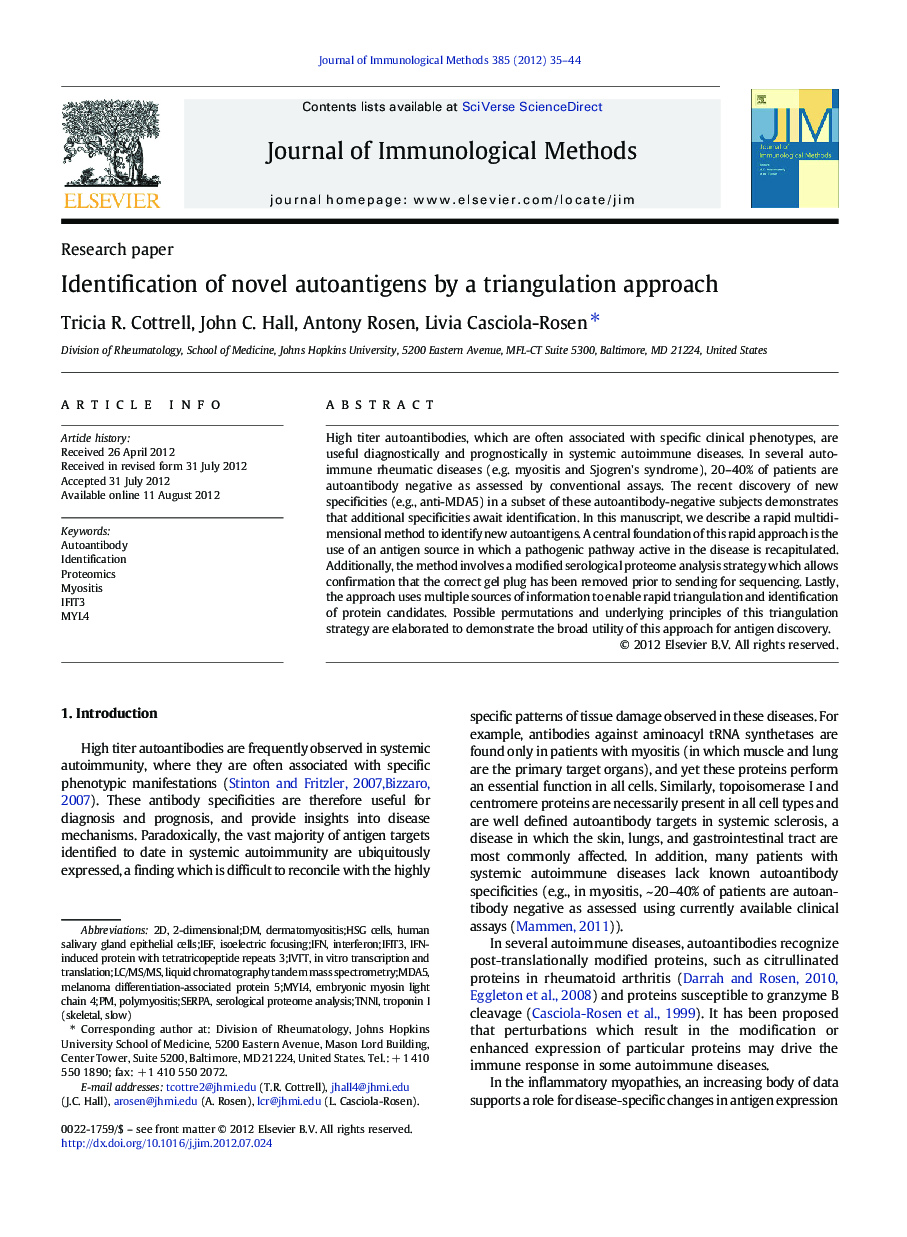| Article ID | Journal | Published Year | Pages | File Type |
|---|---|---|---|---|
| 2088365 | Journal of Immunological Methods | 2012 | 10 Pages |
High titer autoantibodies, which are often associated with specific clinical phenotypes, are useful diagnostically and prognostically in systemic autoimmune diseases. In several autoimmune rheumatic diseases (e.g. myositis and Sjogren's syndrome), 20–40% of patients are autoantibody negative as assessed by conventional assays. The recent discovery of new specificities (e.g., anti-MDA5) in a subset of these autoantibody-negative subjects demonstrates that additional specificities await identification. In this manuscript, we describe a rapid multidimensional method to identify new autoantigens. A central foundation of this rapid approach is the use of an antigen source in which a pathogenic pathway active in the disease is recapitulated. Additionally, the method involves a modified serological proteome analysis strategy which allows confirmation that the correct gel plug has been removed prior to sending for sequencing. Lastly, the approach uses multiple sources of information to enable rapid triangulation and identification of protein candidates. Possible permutations and underlying principles of this triangulation strategy are elaborated to demonstrate the broad utility of this approach for antigen discovery.
► Enhancement of antigen discovery with disease relevant antigen sources ► Modification of the serological proteome analysis method of antigen identification ► Confirmation of antigen acquisition prior to proteomic sequencing ► Improved efficiency of antigen discovery with a triangulation approach
